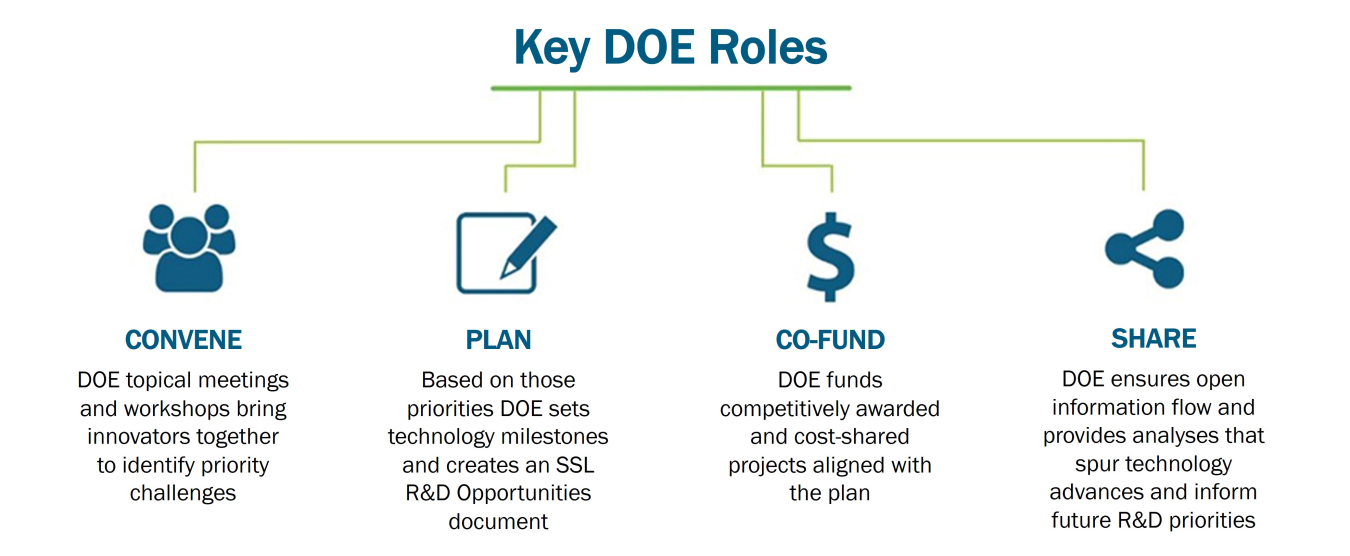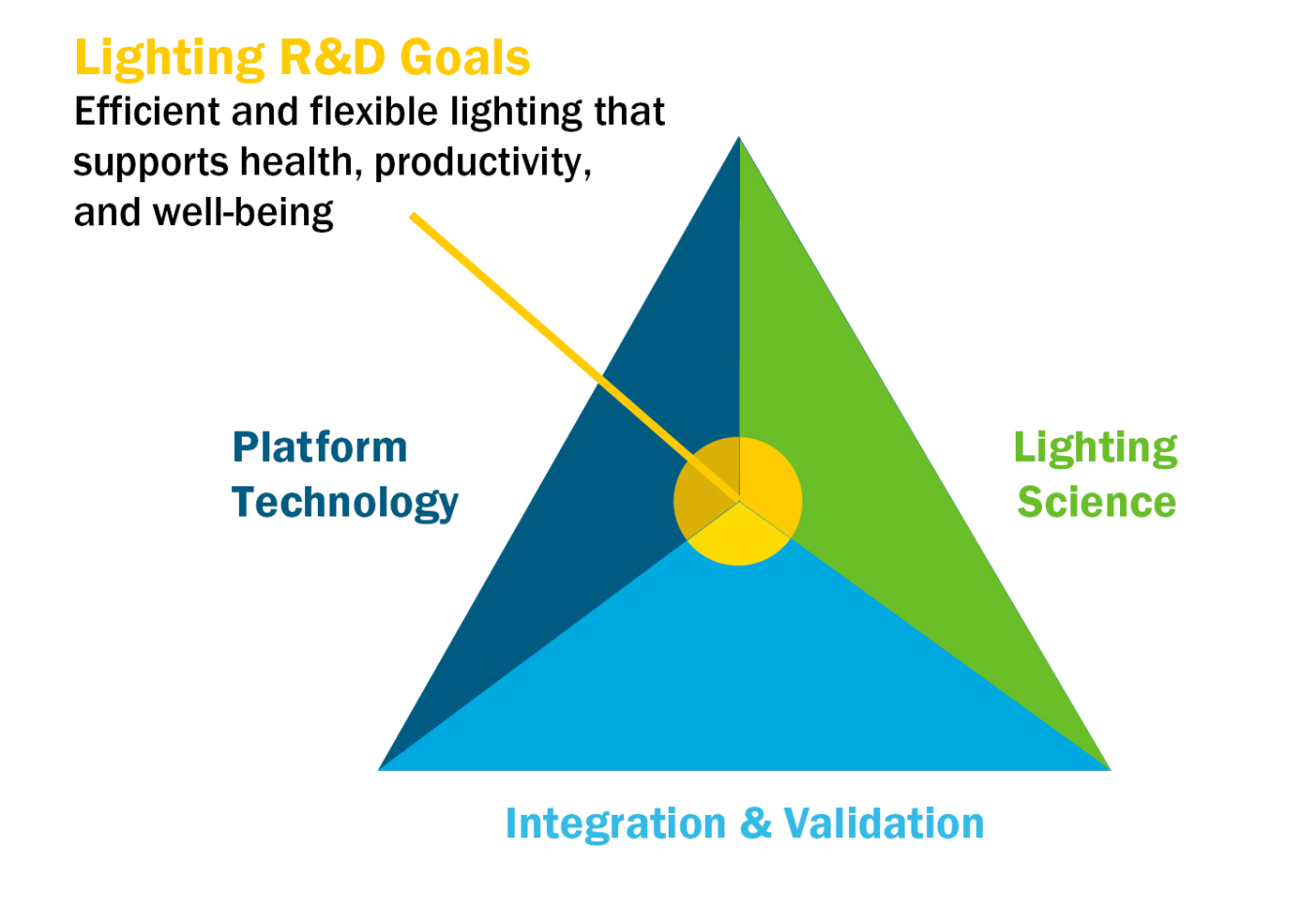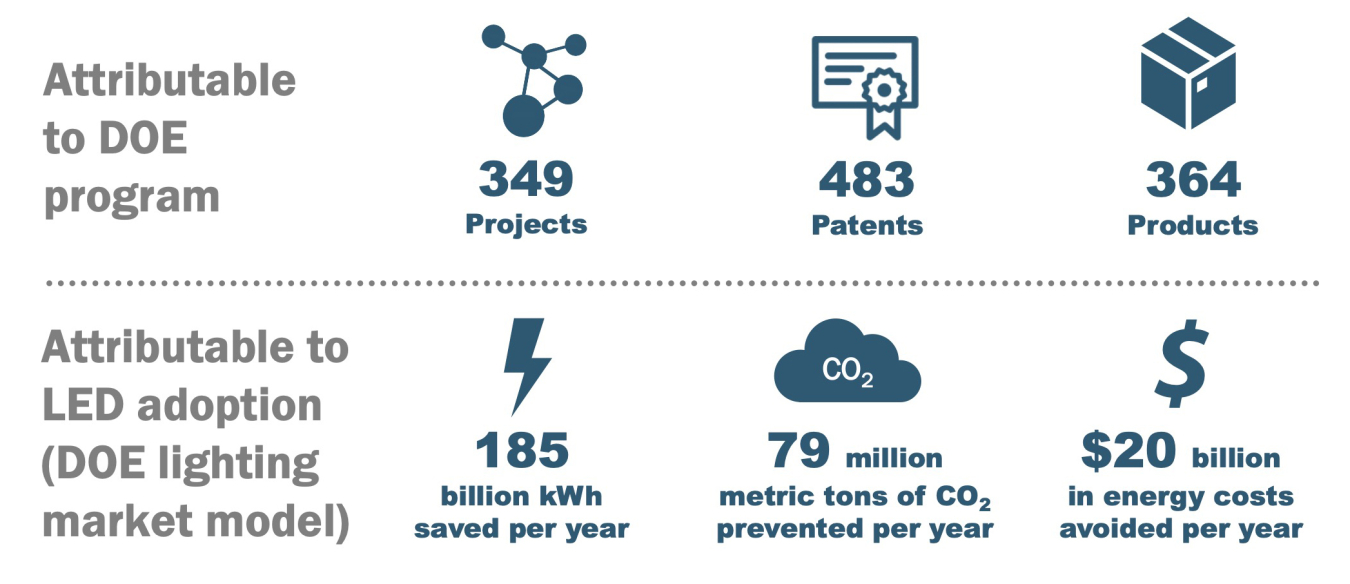About the Solid-State Lighting Program
The DOE Solid-State Lighting Program fosters U.S. scientific capabilities, leverages private funds, provides internationally trusted information, and drives innovation to create efficient and flexible lighting products that support health, productivity, and well-being. Traditional lighting technologies have little leeway for improvements in efficiency, but solid-state lighting (SSL) technology, particularly light-emitting diode (LED)-based technology, still has significant room for growth in achieving its full potential.
According to DOE projections, if DOE targets for efficiency, controls, and connected lighting are met, advanced lighting systems are expected to save 6.9 trillion kWh of electricity by 2035. The total cumulative energy savings would be equivalent to $710 billion in avoided energy costs and 2.1 billion metric tons of avoided carbon dioxide emissions.
Program Strategy
For nearly two decades, the Solid-State Lighting Program has acted as a catalyst, bringing together researchers, industry, universities, standards organizations, utilities, energy efficiency programs, building owners, lighting designers, and specifiers to drive SSL technology advances. The Energy Policy Act of 2005 (EPACT 2005) and the Energy Independence and Security Act of 2007 (EISA 2007) issued directives to the Secretary of Energy to carry out a Next Generation Lighting Initiative to support SSL research, development, demonstration, and commercial application activities. In order to effectively fulfill the directives in EPACT 2005 and EISA 2007, DOE developed a comprehensive national strategy to build collaborative efforts with lighting industry and research partners to guide SSL technology innovation.
DOE partnerships are catalysts for SSL innovations. The SSL Program engages with hundreds of research partners, from universities and national laboratories to large companies and small start-ups. Partners are heavily involved in program planning via workshops, working groups, and topical meetings.

Research Priorities
Program priorities are guided by the Solid-State Lighting R&D Opportunities document, updated annually in collaboration with the U.S. lighting research community.

- Platform technology R&D lowers barriers to adoption, decreases performance tradeoffs, and improves lighting application efficiency through advances in materials, components, device structures, product integration, and manufacturing technology.
- Integration and validation studies evaluate advanced lighting solutions and design strategies in real settings.
- Lighting science research informs productivity benefits and lighting application efficiency, and improves our understanding of how best to apply new capabilities enabled by LED lighting.
Learn more about Solid-State Lighting Program research focus areas.
Program Impacts
The 349 competitively selected R&D projects funded to date have resulted in 483 patents (applied for or awarded) and a huge industry footprint. A total of 364 products can be directly traced to DOE-funded SSL R&D, and millions of products on the market today have some DOE R&D inside.

Those products have contributed to an estimated 185 billion kWh in annual energy savings, equating to 79 million metric tons of carbon dioxide avoided and over $20 billion in energy cost savings for American homes and businesses.
- SSL Patents Resulting from DOE-Funded Projects (Fact sheet, April 2023)
- SSL Commercial Product Development Resulting from DOE-Funded Projects (Fact sheet, April 2023)
- Success Stories
- Research Highlights

